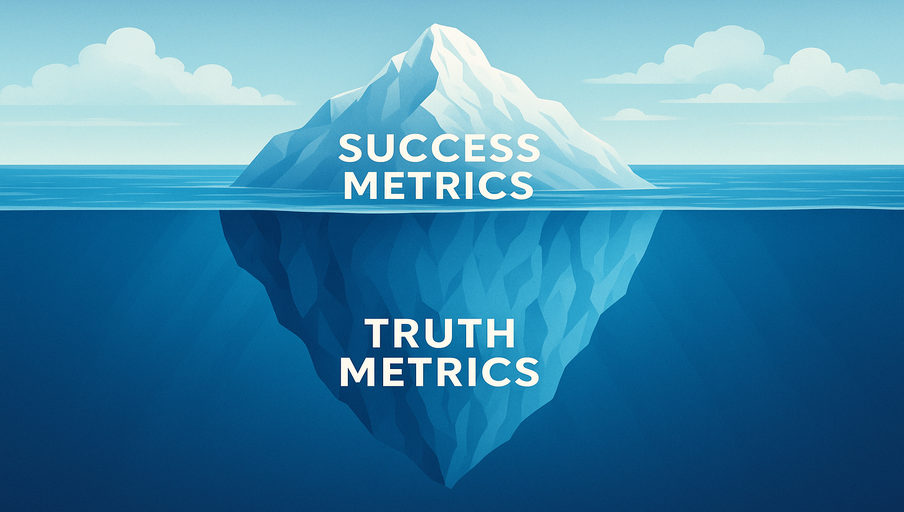Most businesses carry an inherent bias: an obsession with success. As a result, board books, management meetings, balanced scorecards, and performance reviews are filled with what I call success metrics. These are the numbers that suggest “more” or “higher” is always better—higher sales, higher margins, higher customer satisfaction scores, higher NPS, higher employee and customer retention rates.
But are these metrics really telling us the truth?
Can a company have high sales and still be on the brink of bankruptcy? Absolutely.
Can it have strong employee retention but a disengaged, burnt-out workforce? No doubt.
Can it have high NPS scores and still deliver a frustrating customer experience? Definitely.
There’s nothing wrong with aiming for high performance. The problem lies in becoming so singularly focused on these success metrics that we overlook other, more telling indicators. When that happens, we risk missing the real story. And in some cases, that blind spot can lead to a company’s downfall.
Success metrics can be seductive—but also deceptive. They can create a false sense of security and mask the undercurrents of what’s really going on.
So the question is: Where are the truth metrics?
Let’s look at some real-world examples of companies that seemed successful on the surface—but failed miserably because they ignored the signals that truly mattered.
BLACKBERRY
What went wrong: Measured success by device sales and market share without recognizing shifts in customer expectations (e.g., app ecosystems, touchscreens).
Lack of proper metrics: No real-time insight into changing consumer behavior or competitive threats like Apple and Android.
Result: Lost market dominance and is now largely out of the handset business.
BLOCKBUSTER
What went wrong: Measured success by store openings and DVD rentals instead of tracking digital behavior and streaming trends.
Lack of proper metrics: Ignored rising demand for convenience and digital content consumption.
Result: Bankrupted in 2010 after declining a chance to buy Netflix for $50 million in 2000.
In the world of customer experience, too many businesses operate with blinders on. When leadership teams fail to pay attention to customer signals, they expose themselves to costly blind spots. JC Penney ignored that loyal customers valued coupons and pricing predictability—leading to a 25% drop in sales in just one year. Toys“R”Us failed to adapt to evolving shopping behaviors, overlooking parents’ desire for online convenience, competitive pricing, and a seamless omnichannel experience. That disconnect contributed directly to their downfall.
The lesson is clear: Success metrics may tell you how you’re performing, but truth metrics tell you what’s really going on. And only when you measure what truly matters—customer friction and unmet customer expectations—can you protect revenue, reputation, and relevance.
